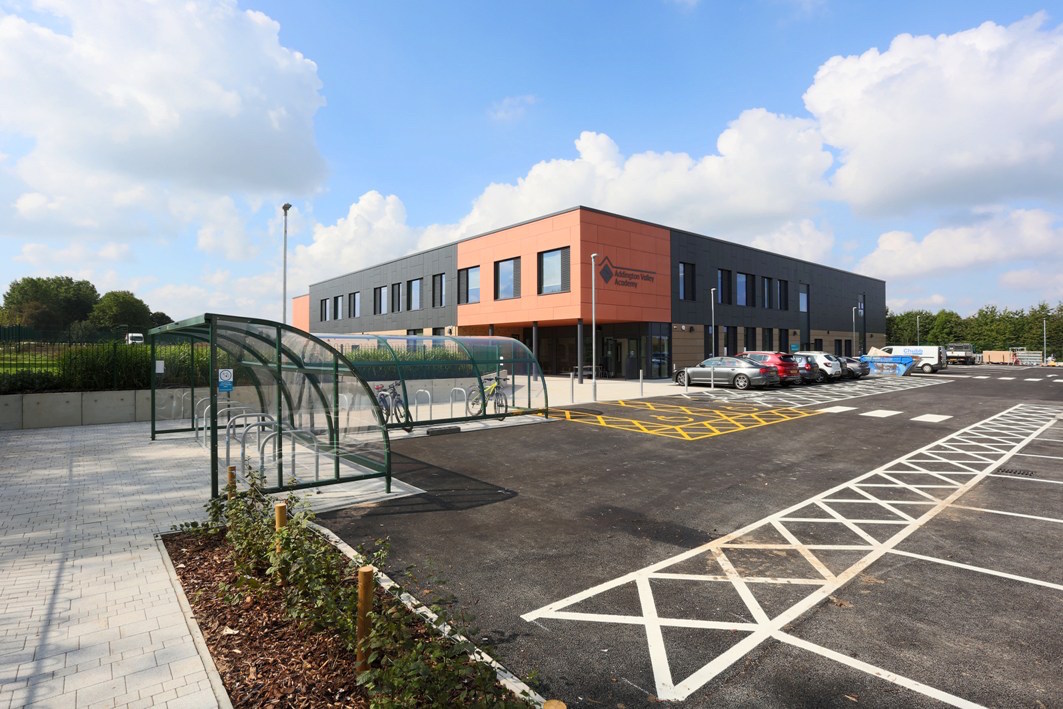
Kier Construction completed the £14m Addington Valley Academy, a new two-storey special needs secondary school in the London Borough of Croydon, in time for the start of the academic year last September. But it wasn’t plain sailing, so project planning software – and not a little ingenuity – was key for Kier’s award-winning project manager Ed Dwight.
Addington Valley Academy was a complicated and time-sensitive programme as the build had a fixed completion date of September 2022: the start of the new school year.
Kier’s scope of work included demolition of an existing building, remediation of the land, constructing the new school and re-landscaping the site. The school design features a steel frame structure, concrete floors and a flat roof with solar panels.
Dwight and his team used Powerproject to programme contractor requirements and estimate the provisions needed on site. They also built contingencies into the timeline to ensure potential setbacks would not compromise their delivery date. They extracted data from Powerproject and sent it to each contractor to plan their resourcing.
“We split our contract programming into subcontractor programmes and coded everything so we could filter it and supply relevant information to those subcontractors,” Dwight says.

“We could see what we needed to achieve over the winter and which tasks were going to be an issue. We were then able to make contingency plans to resolve these issues.”
Multiple options to mitigate delays
The fast-moving project was made more complex because the academy was to be built on the site of an old community centre while the new community centre was being constructed at the same time on an adjacent piece of land.
Even before work began, issues with the new community centre affected Kier’s access to the school site, compromising timelines. So Dwight and his team used Powerproject to model three viable alternative programmes, each altering the build time and cost.
“We revised and updated the logistics with the help of Powerproject to show the client new configurations based on different start and finish dates. This was a relatively simple programming exercise,” he explains.
To reduce the risk of completing late, the client, the Department for Education, chose the critical pathway with a small cost increase and a slightly delayed start. This allowed Kier to retain the original finish date.
Identifying potential problems
Throughout the construction, Dwight and his team used Powerproject to produce regular progress reports and short-term planning programmes, which identified slippage points. They then used this data to decide how to recoup lost time to deliver the new school building on schedule.
For example, the building’s steel frame was originally meant to be erected during the summer, but ended up being constructed over the winter. The frame needed to be sprayed with fire protection paint to meet health and safety standards, but this intumescent paint could not be applied when conditions dropped below a certain temperature and relative humidity.
“Every update needs to be communicated to the whole project team for us to work effectively.”
Through Powerproject, Dwight identified early that programme delays had created an issue with applying the intumescent paint. To mitigate this, the Kier team erected temporary sheeting around sections of the frame to make suitable conditions using space heaters. The programme meanwhile used the contingency time built in at the start of the project to offset the delays.
“By pulling progress reports from Powerproject, we could see what we needed to achieve over the winter and which tasks were going to be an issue,” Dwight explains. “We were then able to make contingency plans to resolve these issues. Powerproject allowed us to work efficiently.”
Ultimately, working closely with contractors and subcontractors, Kier was able to complete the academy on time in just 61 weeks, ready for the start of the new school year.
Shortly after the academy opened, Dwight secured the gold prize in the Secondary Schools category at the CIOB Construction Manager of the Year Awards.
The future
With the academy programme complete, Dwight plans to investigate Powerproject functionalities that his team is not yet using.
One area he is keen to explore is the Site Progress Mobile application. Currently, he acts as a middle person between his planners and site teams, but he wants to automate some of his administrative requirements and enable project teams to collaborate closely.
He reveals: “Building an integrated programme is important, as every update needs to be communicated to the whole project team for us to work effectively. I’m currently marking progress and doing programme updates with our planners, so I know there’s a gap in our Powerproject knowledge. Site Progress Mobile would allow us to have one version of the software that everyone can update live, which would be ideal.”
Dwight also hopes that technology will help support Kier’s sustainability framework. He says: “Planning our resourcing through Powerproject will help us meet our sustainability KPIs around power usage and fuel usage. The software is part of our overall goal to operate as efficiently as possible.
“Using Powerproject and our other business systems to create a better plan, we can improve communications and use materials more efficiently to develop the most sustainable solutions.”
Don’t miss out on BIM and digital construction news: sign up to receive the BIMplus newsletter.













